
Source: martin-dm / Getty
When I think back to my earliest memories of menopause the first word that comes to mind is “Klymaxx.” Not as in THAT climax, but as in the 80s singers. “The Men All Pause.” Whenever I saw advertisements for products that address hot flashes, vaginal dryness, thinning hair, grey hair, arthritis and those annoying television spots with the repetitive chant, “Stress raises cortisol and cortisol increases belly fat” I would brush them aside. “That’s for aunties and grandmas.”
Suddenly one day you turn around and you realize you’re smack in the middle of that windfall that happens to other people. Menopause. Or rather, perimenopause.
Much of the discussions we see happening about menopause are actually describing perimenopause. Menopause itself occurs during a relatively short window of time: the 12 month period in time following her last menstrual cycle. The time leading up until that point is called perimenopause or the menopausal transition and usually starts between the age of 45 and 55. However, for some it can begin in their 30s (what is called early onset perimenopause).
Perimenopause and menopause occurs when our ovaries begin producing less estrogen, causing our hormones to rise and fall erratically as time goes by. The onset of perimenopause varies depending upon genetics and environmental factors. For example, smoking can hasten the start of symptoms 1 to 2 years earlier than non-smokers. Cancer treatment such as radiation and chemotherapy has been linked to early menopause. Women who have had full hysterectomies (those that include removal of the uterus and ovaries) typically experience the “change of life” immediately after surgery since estrogen is produced in our ovaries. Menopause is also largely determined by genetics and race. According to the Study of Women’s Health Across the Nation (SWAN), the largest ongoing study of women and menopause the media age at which White women in the U.S. reach menopause at 51 versus Black women completing this milestone two years earlier at the age of 49 (the median age for Latinas is also 49). Black women also experience longer symptoms of perimenopause than white women and Latinas. On average white women only experience hot flashes for approximately six and half years. Latinas experience them for almost nine years and Black women have them on average for ten years.
The following is a list of other menopausal transition symptoms other than hot flashes one may experience:
Sleep problems

Source: AsiaVision / Getty
Hormonal changes can cause due to night sweats or hot flashes. To minimize disturbances eliminate caffeine consumption late in the day and beyond. Create a sleep routine and follow a set schedule that includes not napping late in the day. Regular daily exercise (not late in the day) can help along with not watching TV or using handheld screens in the bedroom.
Irregular periods
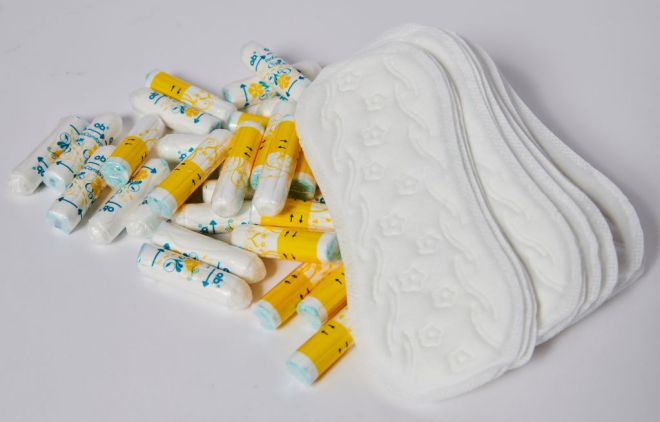
Source: picture alliance / Getty
If you have regular changes in the length of your monthly cycle it can indicate early perimenopause. If you begin having more than two months between periods you are probably in the later stages of perimenopause.
Vaginal changes
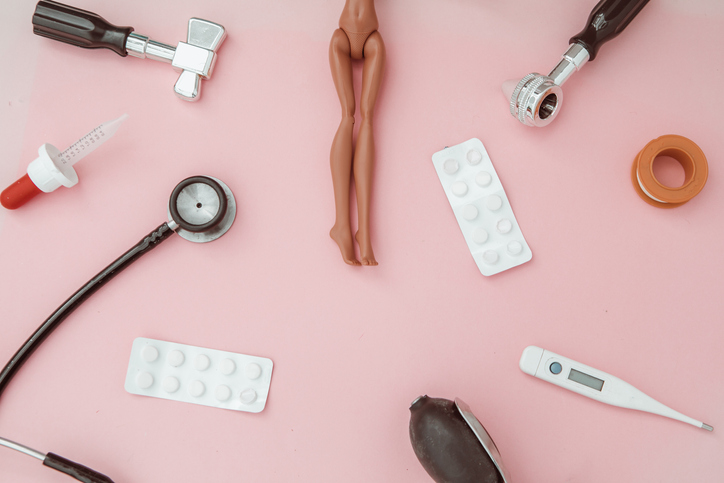
Source: Carol Yepes / Getty
Hormone changes can cause dryness “down there” which may make intercourse painful. Water based lubricants can help “ease” the problem. Some people may experience incontinence (those small “accidents” when you sneeze) or yeast infections, or UTIs. In the case of the former, try Kegel exercises to strengthen your vaginal muscles. If infections become a significant problem your gynecologist may prescribe hormone replacement therapy.
Anxiety and other mood disorders
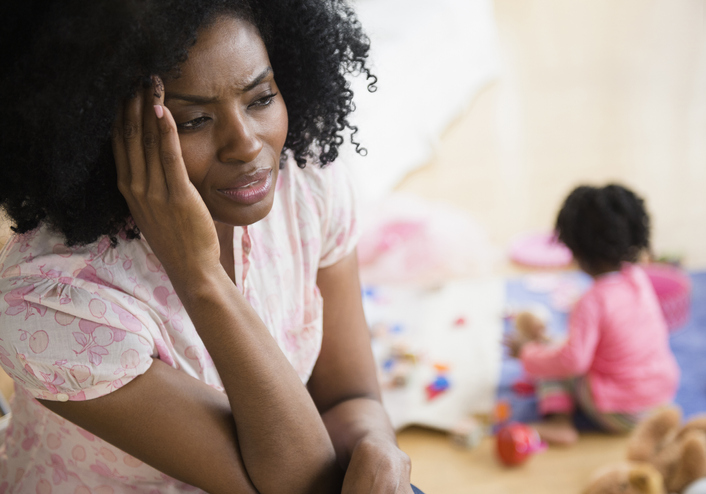
Source: JGI/Jamie Grill / Getty
It is not uncommon to experience irritability or mood swings while in perimenopause. After all, coping with hot flashes is enough to make anyone miserable! Anxiety or depression are other symptoms that can occur. Some ideas for addressing this are here.
Infertility
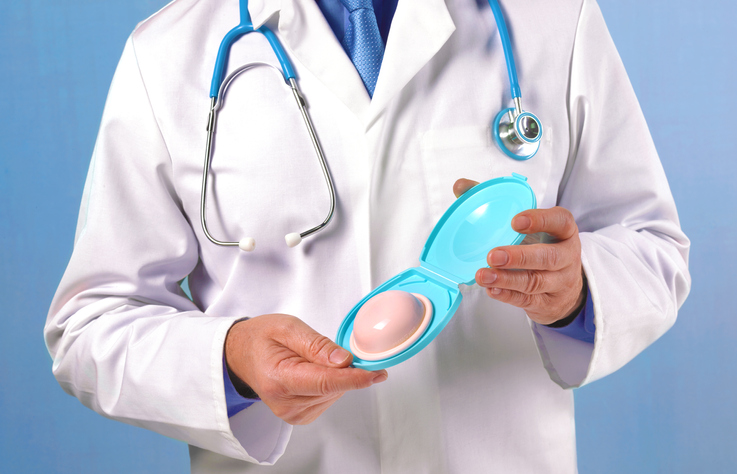
Peter Dazeley
Once ovulation becomes irregular conception becomes harder but as long as you have a period you can get pregnant. If you don’t want pregnancy be sure to use birth control until you have gone without a period for at least a year.
Changes in arousal
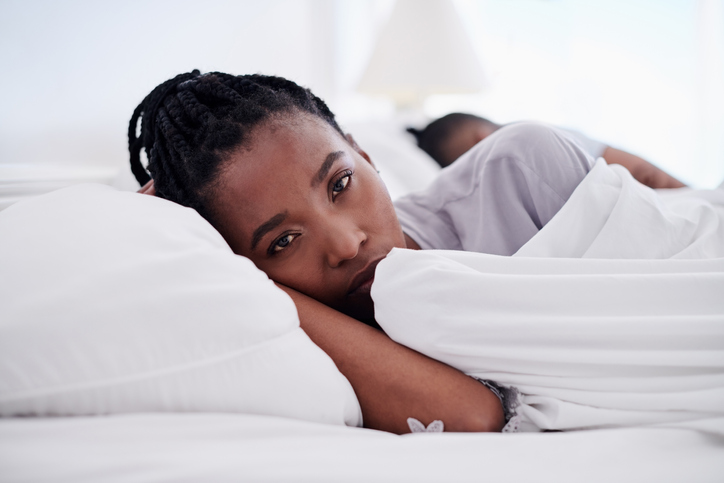
Source: jeffbergen / Getty
It’s a fact that during perimenopause sexual desire and arousal may decline however if you had good sexual responses prior to menopause you are likely to maintain it. Depending upon your lifestyle you may find a decline in desire liberating or a bummer. Check out the North American Menopause Center’s list of suggestions to jump start lowered libido.
Osteoporosis

Source: SDI Productions / Getty
A decrease in estrogen causes loss of bone density, which increases our risk of fragile bones. According to the National Institute on Aging, weight bearing exercises and eating foods rich in calcium and vitamin D can help reduce our risk of developing osteoporosis. Be sure to add supplements to your diet as well.
High Cholesterol

Source: FatCamera / Getty
Decreasing estrogen levels may cause an increase in “bad” cholesterol and a reduction in “good” cholesterol, which can increase the risk of heart disease. For a complete list of things to watch out for click here.
Menopause doesn’t have to be a horrible time of life. In fact, there are aspects of it that can be liberating. Knowing you are at the tail end of your reproductive years can lead to the desire for freer sexual expression. For some this time of life coincides with children leaving the nest, which can create space to finally pursue projects or careers that were otherwise impossible before. The wear and tear on our bodies that comes from chronic stress is real. Black women of all socioeconomic backgrounds suffer from the long term effect of systemic racism. Doctors are just now starting to connect the dots between genetics and external factors such as racism and sexism that leads to the weathering of Black bodies. It is preferable to begin perimenopause later in life since it is lessens our risk of stroke, osteoporosis, heart disease, and our overall life expectancy.
If you are experiencing perimenopausal symptoms early it is a chance to address your overall lifestyle and put preventative measures in place to protect your health. Instead of seeing this time as one to be dreaded, perhaps another way to view it is as an opportunity to make necessary changes to our life so we can set the foundation for a better way of being overall.
RELATED CONTENT: Foods To Avoid During Menopause









